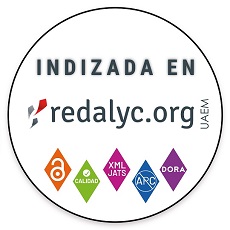Expectativas racionales, ergodicidad y expectativas sociales
Rational expectations, ergodicity and social expectations
DOI:
https://doi.org/10.15446/cuad.econ.v43n92.106494Keywords:
incertidumbre, expectativas racionales, ergodicidad, sistemas complejos (es)uncertainty, rational expectations, ergodicity, complex systems (en)
Downloads
En el presente artículo se crítica la teoría de las expectativas racionales. Se destaca que Knight y Keynes, al distinguir entre riesgo e incertidumbre, propusieron una avenida de investigación completamente diferente. El objetivo es demostrar cómo la falta de comprensión del concepto de ergodicidad y el uso arbitrario de la palabra por parte de economistas –especialmente de la escuela poskeynesiana– desorientó la crítica al enfoque probabilístico de la corriente principal y privó a la teoría económica de los frutos que se podrían haber obtenido siguiendo el camino planteado por Keynes y Knight. Se propone retomar este camino desde la perspectiva de los sistemas adaptativos complejos.
The theory of rational expectations is critiqued. It is noted that Knight and Keynes, by distinguishing between risk and uncertainty, proposed an entirely different avenue of inquiry. It demonstrates how the lack of understanding of the concept of ergodicity and the arbitrary use of the word by economists –especially from the Post Keynesian school– disoriented the critique of the Mainstream probabilistic approach and deprived economic theory of the fruits that could have been obtained by following the path proposed by Keynes and Knight. It is proposed to resume this path based on the perspective of complex adaptive systems.
References
Acemoglu, D., & Ozdaglar A. (2011). Opinion dynamics and learning insocial networks. Dynamic Games and Applications, 1, 3-49.
Acemoglu, D., & Fagnani, F. (2013). Opinion fluctuations and disagreementin social networks. Mathematics of Operations Research, 38(1), 1-27.
Borovkov, A. (1994). Ergodicity and stability of stochastic processes. Wiley Series in Probability and Statistics.
Carrión Álvarez, M., & Ehnts, D. (2016). Samuelson and Davidson on ergodicity: A reformulation. Journal of Post Keynesian Economics, 39(1),1-16.
Coibion, O., Gorodnichenko, Y., & Kamdar, R. (2018). The formation of e0xpectations, inflation, and the Phillips curve. Journal of Economic Literature,56, 1447-1491. https://doi.org/10.1257/jel.20171300
Dalege, J., y van der Does, T. (2021). Changing beliefs about scientific issues: The role of moral and social belief network. https://arxiv.org/abs/2102.10751
Davidson, P. (1982). Rational expectations: A Fallacious Foundation for Studying Crucial Decision-Making Processes. Journal of Post Keynesian Economics, 5(2), 182-198.
Davidson, P. (2007a). John Maynard Keynes. Palgrave Macmillan.
Davidson, P. (2007b). Interpreting Keynes for the 21st Century. Palgrave Macmillan.
De Miguel, V., Garlappi, L., & Uppal, R. (2007). Optimal versus naive diversification: How inefficient is the 1/N Portfolio Strategy? Review of Financial Studies, 22(5), 1915-1953.
Doctor, J. N., Wakker, P., & Wang, T. (2020). Economists’ views on the ergodicity problem. Nature Physics, 16(12), 1168.
Dow, S. C. (2005). Axioms and Babylonian thought: A reply. Journal of Post Keynesian Economics, 27(3), 385-91.
Evans, G. W., & Honkapohja, S. (2001). Learning and expectations in macroeconomics.
Galesic, M., Olsson, H., Dalege, J., Van Der Does, T., & Stein, D. (2021). Integrating social and cognitive aspects of belief dynamics: Towards a unifying framework. Journal of the Royal Society Interface, 18(176), 1-13.
Hamilton, J. (1994). Time series analysis. Princeton University Press.
Hassler, U. (2017). Ergodic for the mean, Economics Letters, 151, 75- 78. https://doi.org/10.1016/j.econlet.2016.12.013
Hommes, C. (2021). Behavioral and experimental macroeconomics and policy analysis: A complex systems approach. Journal of Economic Literature, 59(1), 149-219. https://doi.org/10.1257/jel.20191434
Keynes, J. M. (1937). The general theory of employment. Quarterly Journal of Economics, 51(2), 209-23.
Lavoie, M. (2014). Post-Keynesian economics: New foundations. Edward Elgar.
Matuszewski, P., & Szabó, G. (2023). The role of hyperactive Twitter accounts in the diffusion of political information. Policy Studies, 1-26.
McPherson, M., Smith-Lovin. L., & Cook, J. M. (2001). Birds of a feather: homophily in social networks. Annual Review of Sociology, 27, 415-444.
Norris, J.R., & Chains, M. (1997). Cambridge series in statistical & probabilistic mathematics. Cambridge University Press.
Peters, O., & Gell-Mann, M. (2016). Evaluating gambles using dynamics. Chaos, 26 (2), 1-9.
Peters, O. (2019). The ergodicity problem in economics. Nature Physics, 15(12),1216-1121.
Peters, O., & Adamou, A. (2021). The time interpretation of expected utility theory. http://arxiv.org/abs/1801.03680
Ravazzi, C., Frasca, P., Tempo, R., & Ishii, H. (2015). Ergodic randomized algorithms and dynamics over networks. IEEE Transactions on Control of Network Systems, 2(1), 78-87.
Rizvi, S. A. T. (2006). The Sonnenschein-Mantel-Debreu results after thirty years. History of Political Economy, 38(Suppl 1), 228-245. https://doi.org/10.1215/00182702-2005-024
Romer, D. (2019). Advanced macroeconomics (5th ed.). McGraw Hill.
Ross, S. y Pekoz, E. (2007). A second course in probability. Probability Book Store.
Shiller, R. J. (2020). Expectations. In The new Palgrave dictionary of economics (pp. 1-11). https://doi.org/10.1057/978-1-349-95121-5
Sijtsema, J. J., & Lindenberg, S. M. (2018). Peer influence in the development of adolescent antisocial behavior: Advances from dynamic social network studies. Developmental Review, 50, 140-154.
Smaldino, P. E. (2023). Modeling Social behavior. Princeton University Press.
Steinert-Threlkeld, Z. (2017). Spontaneous collective action: Peripheral mobilization during the Arab Spring. American Political Science Review, 111, 379-403.
Zhang, B., Pavlou, P. A., & Krishnan, R. (2018). On direct vs. Indirect peer influence in large social networks. Information Systems Research, 29(2), 292-314.
How to Cite
APA
ACM
ACS
ABNT
Chicago
Harvard
IEEE
MLA
Turabian
Vancouver
Download Citation
License
Copyright (c) 2024 Cuadernos de Economía

This work is licensed under a Creative Commons Attribution-NonCommercial-NoDerivatives 4.0 International License.
Cuadernos de Economía through the Libraries Division of the Universidad Nacional de Colombia promotes and guarantees open access to all its contents. The articles published by the journal are available globally with open access and licensed under the terms of Creative Commons Attribution-NonCommercial-No_Derivatives 4.0 International (CC BY-NC-ND 4.0), which implies the following:





















